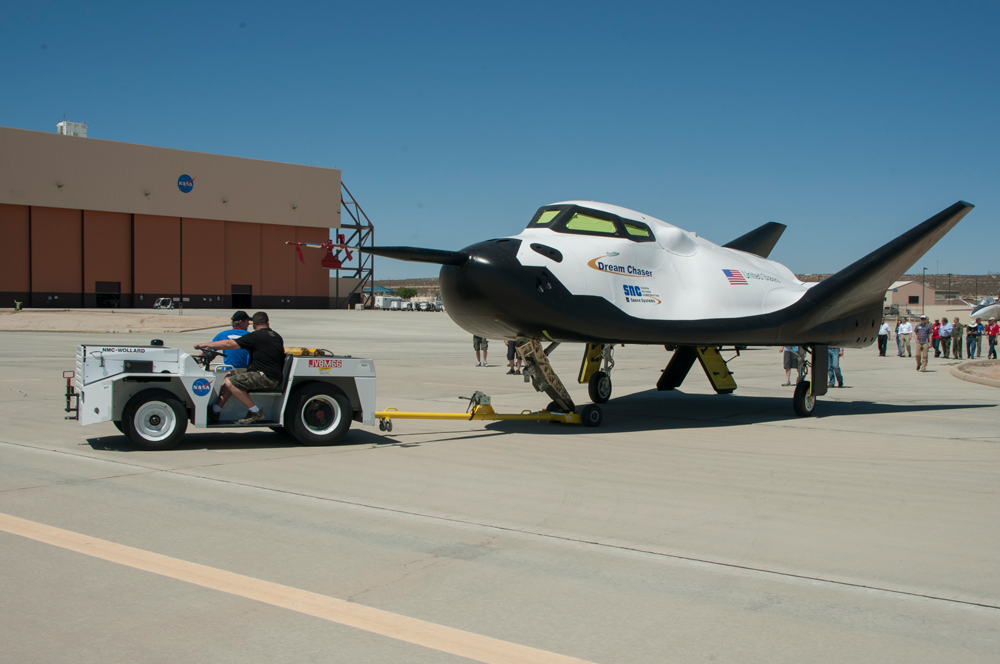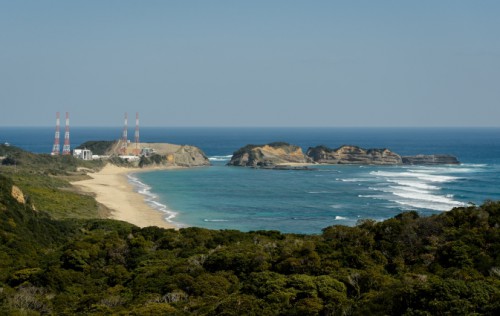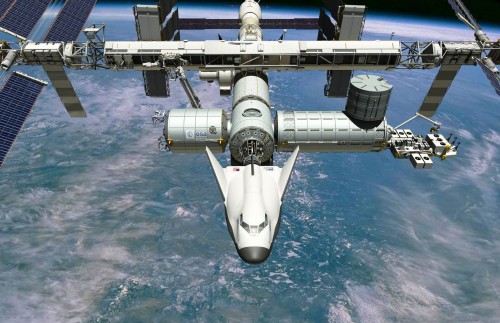
Sierra Nevada Corporation’s (SNC) Dream Chaser “Dream Team” just keeps on growing, as this week the company announced the expansion of its Dream Chaser Space System’s global partnership to include Asia through a new signed memorandum of “cooperative understanding” with the Japanese Aerospace Exploration Agency (also known as JAXA), who now joins the European Space Agency (ESA) and the German Space Agency (DLR) in SNC’s ever-growing international team.
The recently signed agreement, announced today by SNC, will greatly expand the potential for the Dream Chaser, giving SNC an opportunity to work with JAXA for a variety of purposes, including potential applications of Japanese technologies for the Dream Chaser and the development of mission concepts. Not only that, but SNC and JAXA will also be exploring the possibilities for launching Dream Chasers from the Yoshinobu Launch Complex at the Tanegashima Space Center in Japan, as well as landing them there.

“SNC is confident that the expertise the Japanese bring will further advance the development of the Dream Chaser spacecraft, while providing JAXA access to Dream Chaser flights to advance its space technologies, flight opportunities and space interests in LEO,” said SNC in a statement released this afternoon.
SNC is currently competing against Space Exploration Technologies (SpaceX) and Boeing to develop a spacecraft to earn a NASA contract for returning human spaceflight capability to the United States. Currently, NASA is forced to pay over $70 million, per seat, to send our astronauts to and from the International Space Station (ISS), a sad fact that stems from a lack of options after not having a replacement ready when NASA’s space shuttle fleet was retired in 2011. With major funding and support from NASA, SNC is confident that they will have their Dream Chaser ready to conduct its first orbital autonomous flight test from Cape Canaveral, Fla., in 2016, with the first crewed mission flying to the ISS in 2017.
That is, of course, assuming SNC advances to the second phase of NASA’s Commercial Crew Program (CCP) later this year, when the space agency is expected to award at least one of the three mentioned companies hoping to return U.S. astronauts to the ISS from American soil a Commercial Crew Transportation Capability (CCtCap) agreement.
JAXA and NASA already have a solid long standing partnership in space going back many years, working together on the ISS and a variety of other missions such as the Global Precipitation Measurement (GPM) Core Observatory. Japanese instruments are flying on NASA’s Terra and Aqua satellites as well, and NASA sensors have also flown on previous Japanese Earth-observation missions. Earlier this year Japanese astronaut Koichi Wakata, who was launched aboard Soyuz TMA-11M last November, became the first Japanese commander of the ISS, and SNC’s new cooperation with JAXA will almost certainly maintain and strengthen the existing global space partnerships already established between Japan and the U.S.

“We are excited about the potential of this new relationship with Japan,” said Mark Sirangelo, corporate vice president of SNC’s Space Systems. “This expands our global Dream Chaser Space System partnerships to include another major ISS partner with demonstrated capabilities that significantly advance space education and exploration. Japan, like the United States, has the infrastructure to support both launch and landing of the Dream Chaser spacecraft within its own borders.”
The Dream Chaser’s potential as a reusable lifting-body (winged glider) spacecraft is unique and therefore cannot be ignored. No other company is developing anything similar. Dream Chaser will, once it goes operational, have no abort blackout zones and a 3.5-day free-flight capability, with the added benefit of deorbiting at any time (since Dream Chaser can land on any conventional runway, not just the Shuttle Landing Facility at Kennedy Space Center). The spacecraft will also be able to stay at the ISS for up to seven months at a time, if needed, before having to return to Earth, and an expected 1.5 G nominal reentry will provide ideal conditions for returning fragile cargo and science experiments, in addition to making the return to gravity easier on the crew (SNC expects immediate access to crew and cargo upon landing). A quick turnaround and an almost entirely reusable vehicle put Dream Chaser in a class all its own.
The company, assuming again that they advance with NASA’s CCP and earn a CCtCap award, hopes to launch their first autonomous orbital spaceflight in 2016 atop a United Launch Alliance (ULA) Atlas-V 402 rocket, with the first crewed mission to launch in the third quarter of 2017. The company expects to eventually base a fleet of dream Chaser’s, each with unique capabilities, out of Florida’s historic launch sites at Kennedy Space Center and Cape Canaveral Air Force Station.
Dream Chaser has flown once so far, an autonomous free flight test over Edwards Air Force Base. A second autonomous free-flight test, known as ALT-2, is planned to take place at Edwards again later this year before the company conducts its first piloted Dream Chaser free flight test. No specific date(s) have been announced by SNC for those flights yet.
Want to keep up-to-date with all things space? Be sure to “Like” AmericaSpace on Facebook and follow us on Twitter: @AmericaSpace



